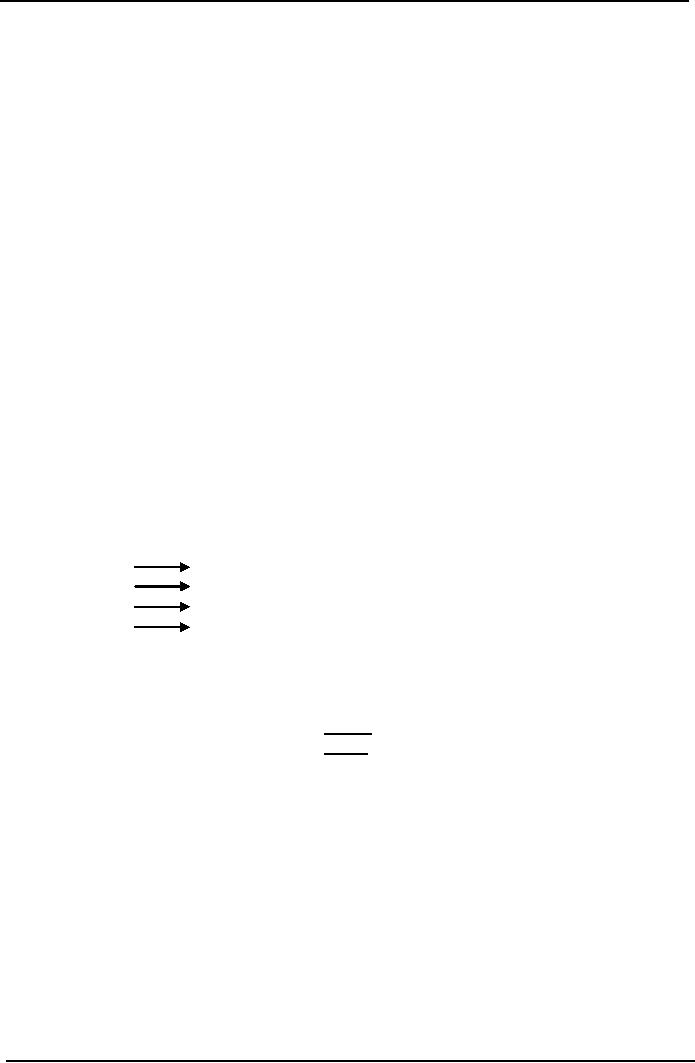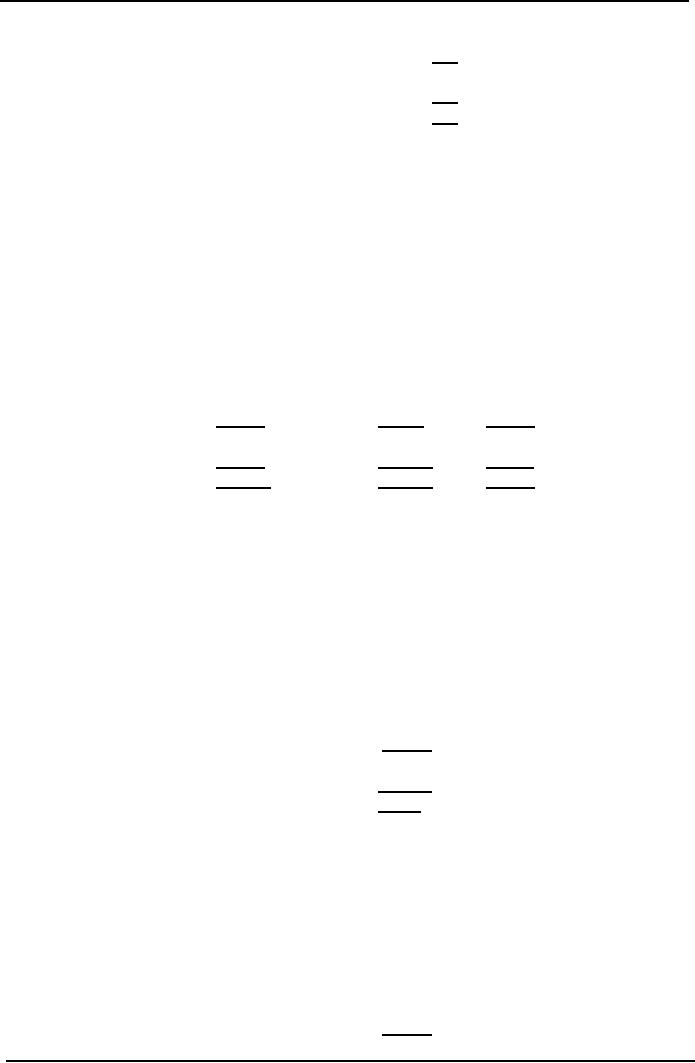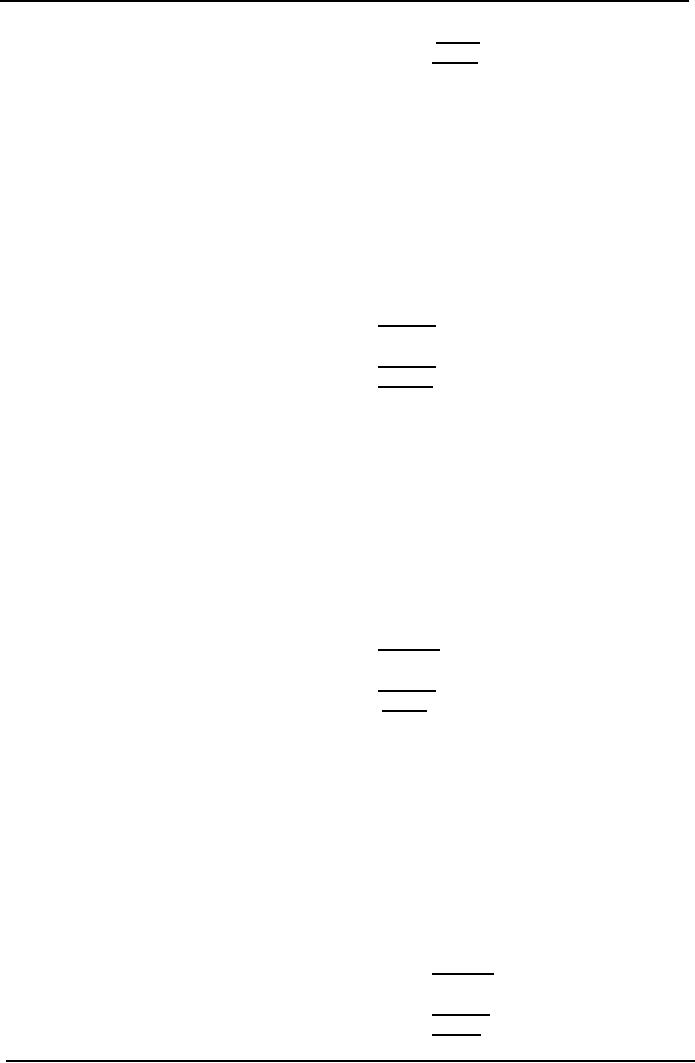 |
COST – VOLUME – PROFIT ANALYSIS:Contribution Margin Approach & CVP Analysis |
| << MARGINAL AND ABSORPTION COSTING:Contribution and profit |
| COST – VOLUME – PROFIT ANALYSIS:Target Contribution Margin >> |

Cost
& Management Accounting
(MGT-402)
VU
LESSON#
29
COST
VOLUME PROFIT
ANALYSIS
(Contribution
Margin Approach)
This
topic is based on your knowledge of
cost behavior and shows
how this is applied in
a
decision-making
situation. Cost-volume-profit (CVP)
analysis is a technique which
uses cost
behavior
theory to analyze the
activity level as to the
contribution margin and fixed
cost
relationship
and the level at which
there is neither a profit
nor a loss (the break-even
activity level).
This
is important management information
because managers need to
know the minimum
activity
level
that must be achieved in
order that the business
does not incur
losses.
CVP
analysis may also be used to
predict profit levels at different
volumes of activity based
upon
the
assumption that costs and
revenues exhibit a linear relationship
with the level of
activity.
Cost-volume-profit
analysis determines how
costs and profit react to a
change in the volume
or
level
of activity, so that management
can decide the 'best'
activity level.
Following
are the assumptions which
are used in CVP
analysis.
1.
Variable costs and selling price (and
hence contribution) per unit
are assumed to be
unaffected
by
a change in activity
level.
2.
Fixed costs, whilst not affected in
total by a change in the
activity level, will change
per unit as
the
activity level changes and
there are more (or
less) units over which to
"share out" the
fixed
costs
If fixed costs per unit
change with the activity
level, then profit per
unit must also
change.
Thus,
cost-volume-profit analysis is always
based on contribution per
unit (assumed to be
constant
unless
a question clearly says otherwise) and
never on profit per unit
because profit per
unit
changes
every time a few more or
less units are
made.
CVP
is a relationship of four
variables
Sales
Volume
Variable
cost
Cost
Fixed
cost
Cost
Net
income
Profit
This
may be understood through
the following equation
Volume
@
sales price
=
Revenue
Cost
matching with the
sales
=
(Cost)
Result
=
Profit
CVP
analysis is a tool for
decision making. There are
two approaches of CVP
analysis:
1.
Contribution margin
approach
2.
Break even analysis
approach
Contribution
Margin Approach & CVP
Analysis
Contribution
margin contributes to meet
the fixed cost. Once
the fixed cost has
been met the
incremental
contribution margin is the
profit.
Income
Statement as per the marginal costing
system is used as a Standard
format of Income
Statement
to analyze the Cost-Volume-Profit
relationship.
Rs.
181

Cost
& Management Accounting
(MGT-402)
VU
Sales
xxx
Variable
Cost
xxx
Contribution
Margin
xxx
Fixed
Cost
xxx
Profit
xxx
PRACTICE
QUESTION
Basic
question
90
units of product "PR" is sold
for Rs. 100 per
unit. Variable cost relating to
production and
selling
is Rs. 75 per unit and
fixed cost is Rs.
2,250.
Q.
1. Management
decides to increase its sales by 10
units.
Required:
Prepare
income statement and analyze.
Solution
Rs.
Rs.
Rs.
Sales
(90 x 100)
9,000
(10 x 100)
1,000
10,000
Variable
cost (90 x 75)
(6,750)
(10 x 75)
(750)
(7,500)
Contribution
margin
2,250
250
2,500
Fixed
cost
(2,250)
0
2,250
Profit
/ Loss
0
250
250
Analysis
This
shows physical increase in volume
causes an increase in contribution
margin and if there
is
not
increase in the fixed cost
because of such change, the
incremental contribution margin is
added
in
the final profits.
Q.
2. Management
decides to increase its sales
price by 10%. Continue with
the Q. 1.
Required:
Prepare
income statement and analyze.
Solution
Sales
100
x Rs 110
11,000
Variable
cost 100 x Rs. 75
(7,500)
Contribution
margin
3,500
Fixed
cost
(2,250)
Profit
1,250
Analysis
This
shows increase in sales
price per unit causes an
increase in the contribution margin, as
there is
not
change in the volume the
fixed will remain unchanged. So the
incremental change is
contribution
margin is included into the
profit.
Q.
3. Management
decides to decrease its sales
price by 10%. Continue with
the Q. 1.
Required:
Prepare
income statement and analyze.
Sales
100
x Rs 90
9,000
Variable
cost 100 x Rs 75
(7,500)
Contribution
margin
1,500
182

Cost
& Management Accounting
(MGT-402)
VU
Fixed
cost
(2,250)
Loss
(750)
Analysis
This
shows decrease in sales
price per unit causes a
decrease in the contribution margin, as
there is
not
change in the volume the
fixed will remain unchanged. So the
change in contribution margin
is
subtracted
from the profits, which
result into a loss of Rs.
750 in this case.
Normally
a decrease in sales price
should case an increase in
the sales volume.
Q.4.
Management
decides to decrease its sales
price by 10% and expects an
increase in sales
volume
by 50%. Continue with the Q.
1.
Required:
Prepare
income statement and analyse.
Solution
Sales
150
x Rs 90
13,500
Variable
cost 150 x Rs 75
(11,250)
Contribution
margin
2,250
Fixed
cost
(2,250)
Loss
0
Analysis
This
shows decrease in sales
price per unit causes a
decrease of Rs. 1,000 in the
contribution
margin,
as well as an increase in volume is
causing an increase in the
profit, this results in an
increase
in profit.
Here
in this scenario the
increase in the volume must
be more than 50% to earn
profits.
Q.5.
Management
decides to decrease its sales
price by 10% and expects an
increase in sales
volume
by 200%. Continue with the
Q. 1.
Required:
Prepare
income statement and analyse.
Solution
Sales
200
x Rs 90
18,000
Variable
cost 200 x Rs 75
(15,000)
Contribution
margin
3,000
Fixed
cost
(2,250)
Profit
750
Analysis
This
shows decrease in sales
price per unit causes a
decrease of Rs. 1,000 in the
contribution
margin,
as well as an increase in volume is
causing an increase in the
profit, this results in an
increase
in profit.
Here
in this scenario the
increase in the volume must
be more than 50% to earn
profits.
Q.6.
Management
decides to increase its sales
volume by 100% and it is
also assumed that
the
fixed
cost also increase upto
Rs. 2,500. Continue with
the Q. 5.
Required:
Prepare
income statement and analyse.
Solution
Sales
200
x Rs 90
18,000
Variable
cost 200 x Rs 75
(15,000)
Contribution
margin
3,000
Fixed
cost
(2,500)
Profit
500
Analysis
183

Cost
& Management Accounting
(MGT-402)
VU
This
shows a decrease in fixed
cost causes a decrease in
the profits.
Q.7.
Management
decides to increase its sales
volume by 100% and it is
also assumed that
the
fixed
cost also increase upto
Rs. 2,500, and also there is
an increase of 20% in the
variable cost.
Continue
with the Q. 6.
Required:
Prepare
income statement and analyse.
Solution
Sales
200
x Rs 90
18,000
Variable
cost 200 x Rs 90
(18,000)
Contribution
margin
0
Fixed
cost
(2,500)
Loss
(2,500)
Sales
***
Variable
cost
(***)
Contribution
margin
***
Fixed
cost
(***)
Profit
/ Loss
***
This
lesson ends up at following
lessons:
1.
At zero contribution margin
the loss will be equal to
the fixed cost
2.
Increase in variable cost
reduces the contribution
margin
3.
Sales Variable cost = Contribution
margin
4.
Contribution margin + Variable cost =
Sales
5.
Contribution margin Fixed cost =
Profit
6.
Profit + Fixed cost = Contribution
margin
7.
Sales - Variable cost = Fixed cost +
Profit
184
Table of Contents:
- COST CLASSIFICATION AND COST BEHAVIOR INTRODUCTION:COST CLASSIFICATION,
- IMPORTANT TERMINOLOGIES:Cost Center, Profit Centre, Differential Cost or Incremental cost
- FINANCIAL STATEMENTS:Inventory, Direct Material Consumed, Total Factory Cost
- FINANCIAL STATEMENTS:Adjustment in the Entire Production, Adjustment in the Income Statement
- PROBLEMS IN PREPARATION OF FINANCIAL STATEMENTS:Gross Profit Margin Rate, Net Profit Ratio
- MORE ABOUT PREPARATION OF FINANCIAL STATEMENTS:Conversion Cost
- MATERIAL:Inventory, Perpetual Inventory System, Weighted Average Method (W.Avg)
- CONTROL OVER MATERIAL:Order Level, Maximum Stock Level, Danger Level
- ECONOMIC ORDERING QUANTITY:EOQ Graph, PROBLEMS
- ACCOUNTING FOR LOSSES:Spoiled output, Accounting treatment, Inventory Turnover Ratio
- LABOR:Direct Labor Cost, Mechanical Methods, MAKING PAYMENTS TO EMPLOYEES
- PAYROLL AND INCENTIVES:Systems of Wages, Premium Plans
- PIECE RATE BASE PREMIUM PLANS:Suitability of Piece Rate System, GROUP BONUS SYSTEMS
- LABOR TURNOVER AND LABOR EFFICIENCY RATIOS & FACTORY OVERHEAD COST
- ALLOCATION AND APPORTIONMENT OF FOH COST
- FACTORY OVERHEAD COST:Marketing, Research and development
- FACTORY OVERHEAD COST:Spending Variance, Capacity/Volume Variance
- JOB ORDER COSTING SYSTEM:Direct Materials, Direct Labor, Factory Overhead
- PROCESS COSTING SYSTEM:Data Collection, Cost of Completed Output
- PROCESS COSTING SYSTEM:Cost of Production Report, Quantity Schedule
- PROCESS COSTING SYSTEM:Normal Loss at the End of Process
- PROCESS COSTING SYSTEM:PRACTICE QUESTION
- PROCESS COSTING SYSTEM:Partially-processed units, Equivalent units
- PROCESS COSTING SYSTEM:Weighted average method, Cost of Production Report
- COSTING/VALUATION OF JOINT AND BY PRODUCTS:Accounting for joint products
- COSTING/VALUATION OF JOINT AND BY PRODUCTS:Problems of common costs
- MARGINAL AND ABSORPTION COSTING:Contribution Margin, Marginal cost per unit
- MARGINAL AND ABSORPTION COSTING:Contribution and profit
- COST – VOLUME – PROFIT ANALYSIS:Contribution Margin Approach & CVP Analysis
- COST – VOLUME – PROFIT ANALYSIS:Target Contribution Margin
- BREAK EVEN ANALYSIS – MARGIN OF SAFETY:Margin of Safety (MOS), Using Budget profit
- BREAKEVEN ANALYSIS – CHARTS AND GRAPHS:Usefulness of charts
- WHAT IS A BUDGET?:Budgetary control, Making a Forecast, Preparing budgets
- Production & Sales Budget:Rolling budget, Sales budget
- Production & Sales Budget:Illustration 1, Production budget
- FLEXIBLE BUDGET:Capacity and volume, Theoretical Capacity
- FLEXIBLE BUDGET:ANALYSIS OF COST BEHAVIOR, Fixed Expenses
- TYPES OF BUDGET:Format of Cash Budget,
- Complex Cash Budget & Flexible Budget:Comparing actual with original budget
- FLEXIBLE & ZERO BASE BUDGETING:Efficiency Ratio, Performance budgeting
- DECISION MAKING IN MANAGEMENT ACCOUNTING:Spare capacity costs, Sunk cost
- DECISION MAKING:Size of fund, Income statement
- DECISION MAKING:Avoidable Costs, Non-Relevant Variable Costs, Absorbed Overhead
- DECISION MAKING CHOICE OF PRODUCT (PRODUCT MIX) DECISIONS
- DECISION MAKING CHOICE OF PRODUCT (PRODUCT MIX) DECISIONS:MAKE OR BUY DECISIONS